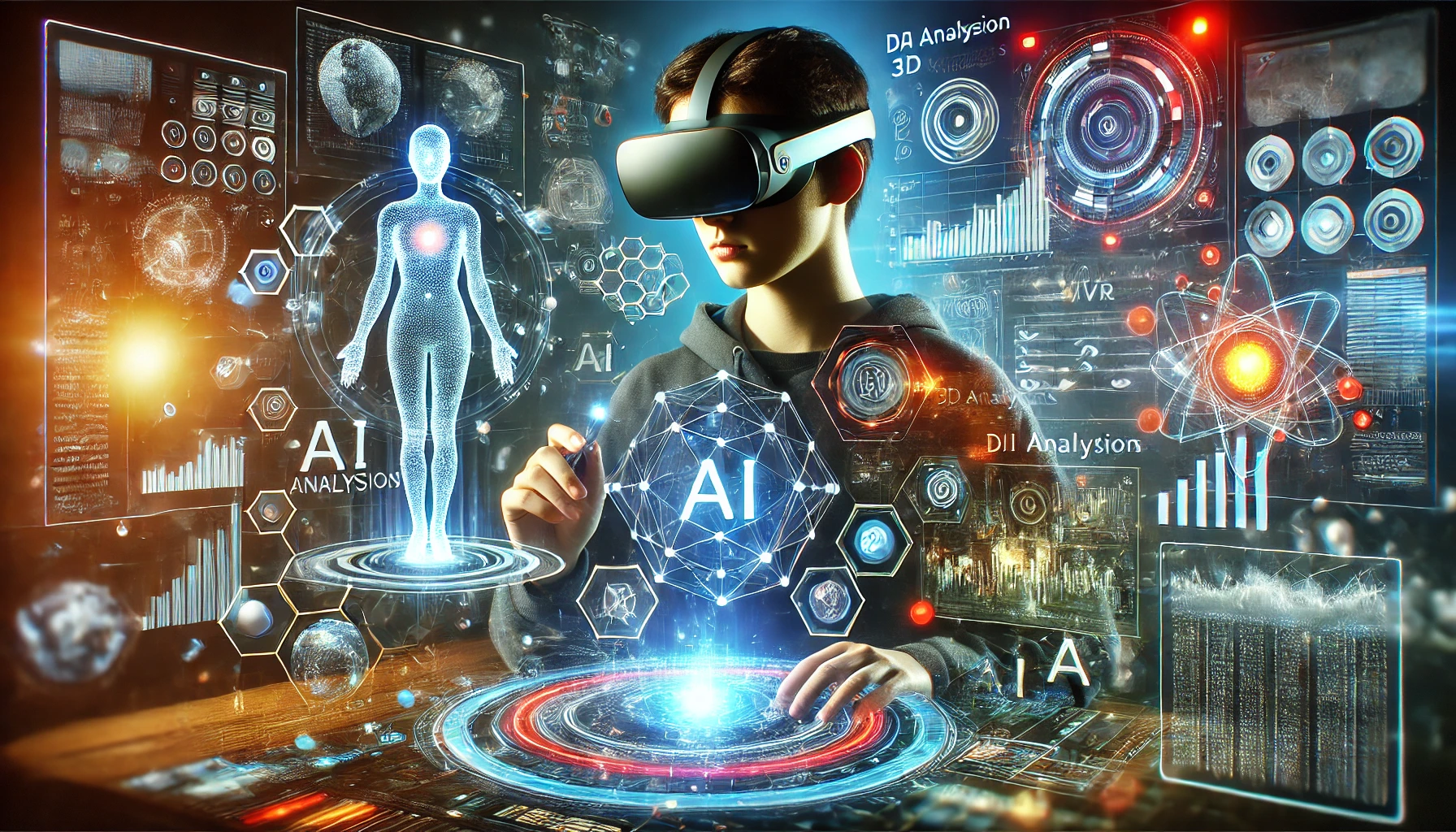Exploring AI R: The Future of Immersive Intelligence

Introduction: AI Meets Reality – Literally
Imagine entering a virtual world where your every move is anticipated, not by a human but by a machine. That's not science fiction – it's the emerging realm of AI R, or Artificial Intelligence Reality, where AI systems blend seamlessly with immersive technologies like Augmented Reality (AR), Virtual Reality (VR), and Mixed Reality (MR). In this brave new world, AI isn’t just a smart assistant – it's an integral part of the environment itself, enhancing the way users interact with digital and physical spaces. Think of it as the lovechild of Tony Stark’s JARVIS and a next-gen VR headset, but less about world domination and more about world-enhancement.
The Science Behind AI R: More Than Just Fancy Acronyms
Let's get into the nitty-gritty. At its core, AI R involves the integration of machine learning algorithms with immersive technology platforms. These algorithms adapt to user behaviors in real-time, making interactions more intuitive. Whether it’s a virtual tutor adapting to your learning pace in AR or a VR workspace reshaping itself based on your productivity patterns, AI R promises to revolutionize user experiences across multiple sectors. Take, for example, Google’s recent breakthrough in real-time object recognition within AR environments. By combining AI's ability to 'see' and AR's ability to overlay information, users can now experience a whole new level of interaction with both digital and physical worlds.
AI R in Action: Applications Transforming Our Lives
We’re already seeing AI R in action, and it's not just reserved for Silicon Valley elites. One standout application is in the realm of healthcare. Picture this: you’re a surgeon performing a complex procedure. As you operate, an AI-enhanced MR headset assists you, projecting real-time data, patient vitals, and AI-generated suggestions directly onto the surgical field. No, it’s not a scene from a futuristic medical drama – it's happening now. Companies like Microsoft, with their HoloLens 2, are pushing the boundaries of what’s possible. Additionally, AI R is making waves in education. Imagine a virtual classroom where AI tailors the learning experience to each student's needs, creating an immersive learning environment that adapts in real-time. Students could walk through a 3D representation of a molecule or experience historical events in VR, all while AI tracks their progress and adjusts the curriculum accordingly.
The Numbers Don’t Lie: AI R’s Impact on Industries
AI R is more than just a flashy tech trend – it's a growing industry. According to a recent report by Statista, the global AR and VR market is expected to reach $209.2 billion by 2024, driven largely by advancements in AI integration. In 2023 alone, investments in AI-driven immersive technologies surged by 35%, with key players like Meta, Google, and Apple leading the charge. But it’s not just Big Tech making moves. Startups are entering the space too, with innovative AI R solutions for fields ranging from real estate to mental health. The numbers tell a clear story: AI R is not just the future of tech – it’s the future of industry.
Ethical Dilemmas: Are We Ready for AI R?
With great power comes great responsibility – and AI R is no exception. The ethical implications of merging AI with immersive tech are vast and complex. Should we allow AI to track and respond to our every move in a virtual environment? What happens to the data collected, and how can users ensure their privacy in a world where AI knows them better than they know themselves? There’s also the question of accessibility: will AI R technologies be affordable for the masses, or will they remain a tool for the privileged few? Experts in AI ethics, like MIT's Dr. Kate Darling, warn that while AI R has incredible potential, it's critical to build frameworks that prioritize user consent, privacy, and inclusivity.
What’s Next for AI R? Trends to Watch
The future of AI R is teeming with potential. One major trend is the convergence of AI R with other emerging technologies, like blockchain and quantum computing. Imagine a decentralized VR world where AI-driven avatars assist users in navigating blockchain-based marketplaces, all secured by quantum encryption. Another area to watch is AI R’s role in the creator economy. AI can already generate 3D models and environments in VR, but as these systems become more advanced, we could see AI co-creators working alongside human artists in everything from game development to architectural design.
Conclusion: Are You Ready for AI R?
The potential of AI R is staggering, but it raises as many questions as it answers. Will it create a more inclusive and innovative future, or will it deepen existing divides? As we move toward a reality where our digital and physical worlds are indistinguishably intertwined, it's time to ask ourselves: are we ready for AI R? And more importantly, how will we shape the future of this groundbreaking technology? Share your thoughts and join the conversation on Reddit or Twitter – we’d love to hear your take on this futuristic fusion of AI and immersive reality.



